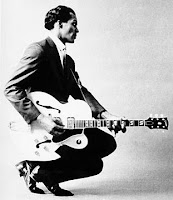The Red Velvet Sling: Dead men tell no tales, luckily their spirits do

The 1900 Florodora Musical, made famous in large part by its chorus of six identically-sized (5 ft. 4in.) singing and dancing girls, inspired many things: love, scandal, “the crime of the century” and one crimson cocktail. Young men crowded the theater every night, even after all six original Florodoras married millionaires. But one Florodora didn’t live happily-ever-after.
Rumored to be the “loveliest girl who ever breathed,” Evelyn Nesbit, then 16, became mistress to 47 year-old millionaire and eccentric architect, Stanford White. At parties in his lavish West 24th Street flat, Evelyn could always be found swinging back and forth on a large red velvet swing built exclusively for the prurient pleasure of Mr. White.
After leaving White, Evelyn married Harry Thaw, another millionaire who, by the age of 34, was slowly going insane. For the next three years, Thaw persecuted Evelyn about her relationship with White. He grew obsessed with their former swinging affair, until June 25, 1906, when he confronted Mr. White atop the Madison Square Garden dinner theatre, shooting him three times in the face.
In the years following the trial, Evelyn Nesbit realized only mild success as a vaudeville performer and silent film actress. But what’s success in comparison to notoriety?
Modern recipes of the cocktail have become saccharine, belying the true complexity of the original cocktail and the story. Skip the Framboise, the Chambord and DIY:
1 1/2 oz Old Tom’s Gin
1/2 oz fresh lime juice
1/2 oz fresh raspberry-ginger syrup*
ginger beer
fill Collins glass with crushed ice
garnish with one raspberry and ginger slice

*raspberry-ginger syrup

2 cups raspberries
½ cup fresh grated ginger
1 1/2 cups sugar, plus 2 tablespoons
1/2 teaspoon fresh lemon juice.
1. Combine berries, ginger, 2 tablespoons sugar and 1 cup water in a medium saucepan with a heavy bottom Cook over medium heat, stirring constantly, until berries begin to break down and release their juices
2. Add 1 1/2 cups cold water and lemon juice. Bring to a boil, then immediately turn down to a simmer and skim off any foam that bubbles to top. Cook for 15 minutes
3. Strain into bowl through cheesecloth-lined strainer, pressing on fruit to squeeze out juices. Return the liquid to the pan and add 1 1/2 cups sugar. Stir until sugar dissolves. Bring to a boil and cook for 2 minutes. Remove from heat and let cool. Store in a tightly sealed container in the refrigerator for up to 3 weeks.














